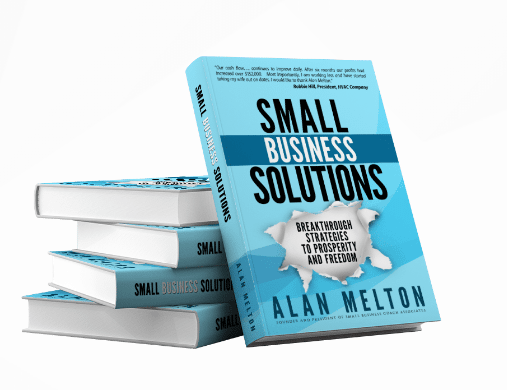VIEW BY TOPIC
- Finding Customers
- Business Systems
- Managing Employees
- Leadership
- Managing Money
Related Posts

Ready to Grow Your Business Fast?
Here’s How I Grew Five Businesses, and Eventually Sold One to a Fortune 500 Company.

Differentiate Your Company by Celebrating YOU! Part 3 of 3
Step 3. Your Business Competitive Advantages
This is the last part of a three-part series. We have looked at your personal mission, your business purpose and what your customer wants. Let’s look at your competitive advantages and telling your story.
Competitive advantages are simply the things your company does better than your competitors. They influence your customers and potential customers to use your company, rather than the competition. You and your team (especially your sales team) can brainstorm to identify what your competitive advantages are, and the ones you want to acquire.
Brainstorm Your Competitive Advantages
You can begin your brainstorming meeting with reading your company purpose statement, and ask your team, “What are we really good at?” “What do we want to be really good at?” Your final product is simply a list of things your company does well. Knowing this will help your employees to tell your story (more about that later).
Incorporating Needs of Owners, Customers, Employees and, Stakeholders
In summary, the marketing foundation of your business should incorporate the needs of owners, customers, employees, and all other stakeholders. Some other things to consider as competitive advantages could include your facility, business affiliations, and credentials such as certification, company awards, service guarantees, value-added services, technology, and the best employees.

Step 4. It’s time to tell your story
At this point, your task becomes crystal clear! Your job is to close the gap between where your company is, and where you want it to go. Your role as a leader is ensuring your business is living its values (starting with you), heading in the direction of your vision, and accomplishing its mission daily. You set goals that will move you in the right direction and lead your company toward the goals. As you achieve the goals, you celebrate and set new goals. The process never stops; you keep taking “baby steps” toward your long term purpose. The most important part of this process is “Telling Your Story.”
Telling the Story Energizes You, Your Team and Others
As the leader, you keep articulating your business purpose and your competitive advantages to your employees, your customers, your vendors, and your other stakeholders. You keep the vision alive by “Telling Your Story.” Every time you tell the story, you energize yourself and your audience! It is amazing to watch employees, customers, vendors, and other stakeholders line up behind you, and begin to help you in the achievement of your purpose.
Find Ways to Communicate Your Business Purpose and Competitive Advantages
There are limitless ways to tell your story. You can use employee meetings, customer presentations, a company newsletter, a printed purpose statement for each office, new employee orientation, discussing it during employee interviews, printing it on the back of your business cards, recording it on your telephone hold message, brainstorming with your employees how to make one aspect of your purpose statement reality, the list goes on and on.
Your Business Practicing What You Preach
As you do this again and again with your employees and encourage them to get the word out, they get excited and become part of your marketing team. And speaking of marketing, your business purpose and competitive advantages will serve as the foundation to share with your advertising team, vendors, and your community. But to keep this excitement and momentum building, you have to make sure you “practice what you preach.”
Dr. Richard Cole, COO of Blue Cross Blue Shield, says the following about product differentiation: “When positioning your company in the marketplace, don’t let anybody fool you. It is the behavior of your organization, not what you say about it, that counts.” You, the leader, must ensure that your employees are “walking the talk.”
Conclusion
In summary, to differentiate your company, write a personal and business purpose statement, find out what the customer wants, develop your competitive advantages, and tell the story again and again. Like anything else in life that is worthwhile, differentiating your business is plain hard work. There are no shortcuts to success. But if you are diligent and persist, you and your customers will eventually begin to see the difference in your company, and you will have a reason to celebrate!
This article is Part 3 of 3. Read Part 1
Alan Melton co-founded and led an award-winning company before selling it to a publicly held company. He has started and led 10 companies and presently serves as owner of three growing businesses. Alan is sharing his experience with entrepreneurs and executives who want to get on the fast track to achieving their personal goals. President of Small Business Coach & Assoc., Alan is a nationally known writer, speaker and business leader.
Questions about our small business coaching services?
Call us at 1-888-504-0777,
or














